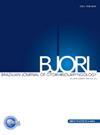Quality-of-life assessment instruments for patients with vestibular schwannoma: A systematic review
IF 1.7
4区 医学
Q2 OTORHINOLARYNGOLOGY
引用次数: 0
Abstract
Objective
The European Association of Neuro-Oncology (EANO) indicated that different study designs and methodologies led to inconsistent conclusions about treatment methods and QoL in patients with Vestibular Schwannoma (VS). This study systematically reviews recent findings about QoL assessment instruments for patients with VS and provides recommendations for the measurement of QoL with standardized psychometric tools.
Methods
This study was conducted based on the PRISMA 2020 guideline for reporting systematic reviews. The key words used were as follows: quality of life, health-related quality of life, vestibular schwannomas, acoustic neuroma. Studies were included when the following eligibility criteria were met.
Results
Our search finally yielded 48 articles published in years 2014–2024 that measured QoL in patients with VS using standardized psychometric tools. The studies examined various dimensions of QoL. The most frequently used disease-specific questionnaire was the Penn Acoustic Neuroma Quality of Life (PANQOL). As a generic tool, authors preferred to use the Short-Form 36-Item Health Survey (SF-36).
Conclusion
Recent findings and data on Quality of Life (QoL) tools for patients with VS emphasize the importance of using standardized and disease specific tool like PANQOL, due to their frequent use and large amount of patient data. Although the SF-36 is commonly used for general assessments, it may not be sensitive enough for a complete QoL evaluation and should not be the only tool used. The GBI is effective for assessing changes after specific medical treatments. Using methods similar to those in past studies helps medical professionals make reliable conclusions about QoL and evaluate the effects of different treatments in VS patients.
求助全文
约1分钟内获得全文
求助全文
来源期刊

Brazilian Journal of Otorhinolaryngology
OTORHINOLARYNGOLOGY-
CiteScore
3.00
自引率
0.00%
发文量
205
审稿时长
4-8 weeks
期刊介绍:
Brazilian Journal of Otorhinolaryngology publishes original contributions in otolaryngology and the associated areas (cranio-maxillo-facial surgery and phoniatrics). The aim of this journal is the national and international divulgation of the scientific production interesting to the otolaryngology, as well as the discussion, in editorials, of subjects of scientific, academic and professional relevance.
The Brazilian Journal of Otorhinolaryngology is born from the Revista Brasileira de Otorrinolaringologia, of which it is the English version, created and indexed by MEDLINE in 2005. It is the official scientific publication of the Brazilian Association of Otolaryngology and Cervicofacial Surgery. Its abbreviated title is Braz J Otorhinolaryngol., which should be used in bibliographies, footnotes and bibliographical references and strips.
 求助内容:
求助内容: 应助结果提醒方式:
应助结果提醒方式:


